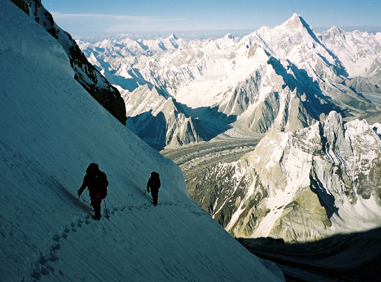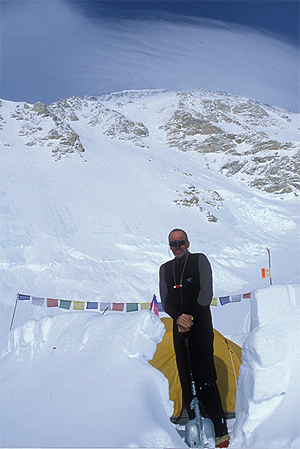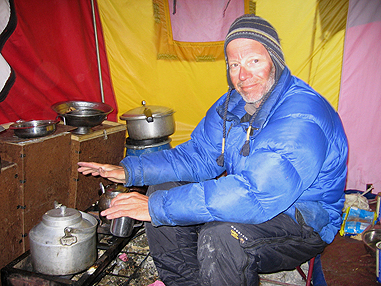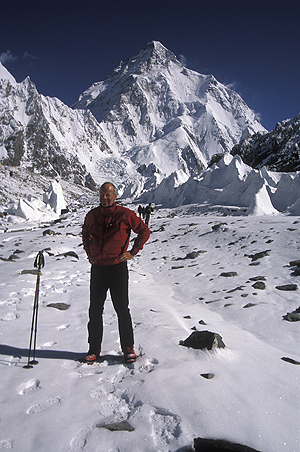By STEPHEN REGENOLD
The mountain is called Kangchenjunga, and at 28,169 feet above sea level it is the planet’s third-tallest peak, an immense white wall in the sky north of Darjeeling, India. Like all great peaks of the Himalayas, Kangchenjunga’s summit has been sought out by humans for decades. Climbers have traveled across the globe, trekking and camping for weeks through India or Nepal, then ascending for days — boots kicking, ice axes in hand — into air so thin you might stumble like a drunk.
It was on Kangchenjunga in 2002 that Mike Farris, a biology professor from Northfield, Minn., climbed to 26,000 feet and witnessed the worst possible outcome of a high-altitude mountaineering expedition.
As he plodded uphill on the morning of May 24, two climbers from another team were approaching Kangchenjunga’s summit. They would soon turn around, victorious after weeks of effort, while Farris — dehydrated, hypoxic, feeling ill — scanned the white void above, resigned that he might not make it to the top.

above: Mike Farris (at left) and unknown climber at 25,000 feet on Broad Peak, Pakistan.
What happened next, a tragedy on the slope above Farris’ stance, became a powerful point in a chain of events that prompted him in 2005 to begin writing a book.
An hour after leaving Kangchenjunga’s summit, Chris Grasswick, a young Canadian among the pair coming off the high point, fell, snagging his foot on a rock, then sliding off an edge, ropeless, tumbling more than a thousand feet on the mountain’s upper flank. In a single moment, Grasswick — an airline pilot and experienced mountaineer with a wife waiting at home — was gone.
Farris said the serious nature of what had just happened didn’t at first register: “I was so exhausted and numb from the altitude that extreme emotion was not possible.”
But as he hiked down the mountain with a half-dozen other climbers, oxygen grew thicker in the air and his head started to clear.
Grasswick and his partner were well-acclimated on Kangchenjunga, having spent days at a high camp to prepare for the summit bid. But Farris said the young Canadian was in a rush to get up the mountain, as he was due back to his job earlier than other climbers that season on the peak. Farris wondered how the physiological effects of altitude, combined with the external psychological pressure of a shortened trip timeline, may have affected Grasswick’s descent.

above: Farris at 14,100 feet on Denali.
A 52-year-old biologist and researcher who is three decades into his career, Farris made no hard conclusions, scientific or otherwise, about the accident on Kangchenjunga. Like most mountain climbers, he accepts that his sport is full of risk. But Grasswick’s misstep, a stupid glitch of fate, could have happened anywhere.










